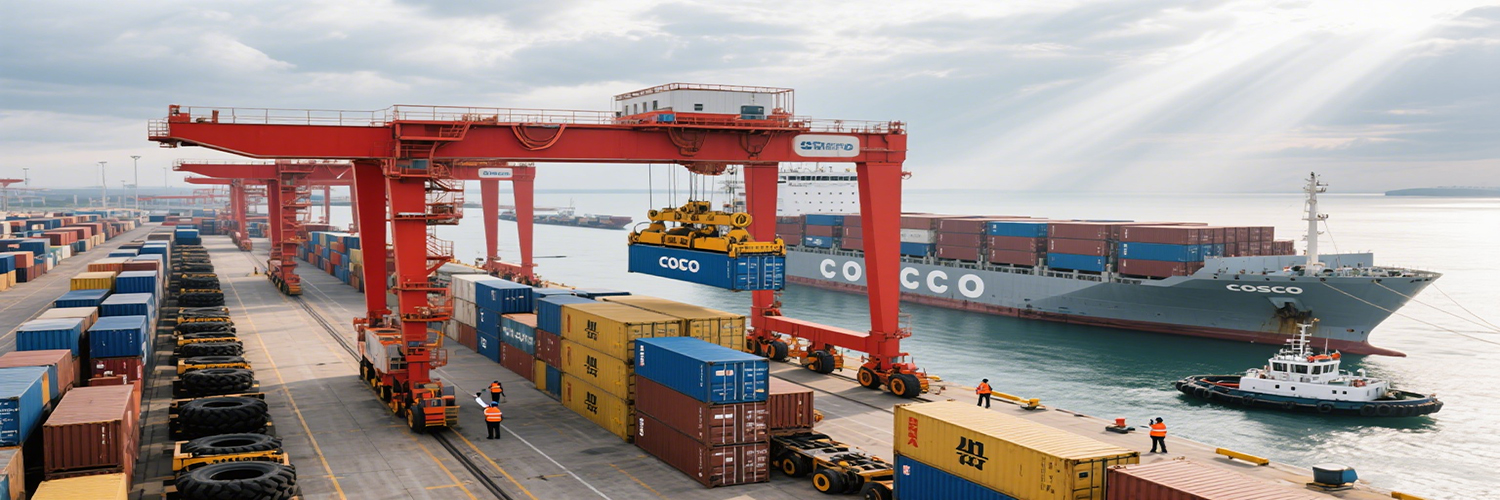400-9920-618
According to statistics, approximately 90% of global trade is carried out by sea. Therefore, containers play a crucial role in international freight transport. Traditional methods of managing port container yards have limitations. Specifically, the number of containers entering the yard is unstable, leading to overcrowding during peak hours. Manually entering data such as container quantity, location, status, and arrival and departure times is prone to errors, impacting the entire process and causing inaccurate reporting. This makes it difficult for managers to track the flow of large numbers of containers, which can easily lead to congestion or even container loss, potentially resulting in significant financial losses for businesses.
The application of RFID in container management helps automate port and yard processes, track the precise location of containers, and effectively manage assets.

1. Container Tracking and Real-Time Monitoring
Automatic Identification: RFID tags (such as UHF passive tags) are installed on containers to record information such as the container number, cargo type, and destination. RFID readers at port gates, yards, or cranes automatically collect data, replacing traditional manual scanning or paper records. Real-time Positioning: Combined with GPS or RTLS (Real-Time Location System), this system tracks the location of containers within the port area, optimizing scheduling and reducing the risk of lost containers.
2. Gate Automation (Automated Container Inspection)
Fast Passage: When container trucks pass through the gate, RFID readers automatically identify the tag information and verify the data with back-end systems (such as the Terminal Operating System (TOS)), enabling inspection and release within seconds and reducing congestion.
Data Verification: Automatically verifies container integrity (such as seal numbers) and the consistency of cargo information with customs declarations, reducing human error.
3. Yard Management Optimization
Smart Stacking: RFID is integrated with the yard mapping system to automatically record container stacking locations (bay positions, layer heights), improving space utilization.
Inventory Counting: Handheld or fixed RFID devices are used to quickly count yard inventory, eliminating the time and errors of traditional manual counts.
4. Improved Loading and Unloading Efficiency
Crane Collaboration: RFID readers installed on bridge cranes and yard cranes automatically identify containers to be loaded and unloaded, ensuring precise alignment of loading and unloading operations with the vessel's stowage plan.
Operation Verification: Prevent misloading and missing containers, and reduce shipping delays caused by container number confusion.
5. Safety and Compliance Management
Seal Monitoring: Electronic seals (with integrated RFID) monitor container opening and closing status in real time to prevent theft or smuggling during transit.
Hazardous Goods Control: RFID tags are added to hazardous goods containers to record special handling requirements (such as temperature control and isolation) to ensure compliance.
6. Intermodal Transport Collaboration
Seamless Integration: RFID enables data sharing at the intersection of rail, road, and sea transport, reducing duplicate data entry during transit and improving intermodal transport efficiency.
RFID technology eliminates the need for manual intervention, adapts to harsh environments, and enables batch reading. Integration with technologies such as EDI and blockchain enhances supply chain transparency. Ports can achieve digital management of the entire container lifecycle, significantly reducing operating costs and increasing throughput capacity. However, the metal material of the container may affect the RFID signal, so it is necessary to use anti-metal tags or optimize the antenna layout. The investment in tags and hardware must be balanced with long-term benefits (such as manpower savings and error reduction) to select appropriate tags and supporting hardware and software equipment.